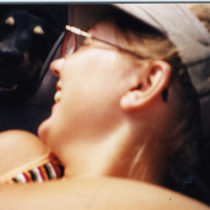Landscape Architecture for Landscape Architects › Forums › RESEARCH › landscape immersion exhibits in zoo design
- This topic has 1 reply, 9 voices, and was last updated 16 years, 2 months ago by
 Barbara Peterson.
Barbara Peterson.
-
AuthorPosts
-
December 31, 2008 at 6:16 am #175719
Nurazlina Abu Bakar
Participanthello out there. i’m currently working on the research about landscape immersion in zoo exhibits design. To be specific, for primate habitat exhibits. I’m really looking forward for those out there who could contribute references or articles that might be helpful.
January 16, 2009 at 5:03 am #175734 Barbara PetersonParticipant
Barbara PetersonParticipantTo start, check out a website called ZooLex Zoo Design Organization- http://www.zoolex.org . It is a website dedicated to zoo design – I think that you will find it useful. Look in the Gallery section as well as the Firms section (Firms section will get you to companies that work in the zoo field), and then also check out the Research section (you’ll find tons of articles that might be of use).
What specific type of information are you looking for ie enclosure size, enrichment types, species that are in mixed-species exhbits with primate, what type of primate – ie large (gorillas, orangs, chimps, etc) or smaller primates (lemurs, gibbons, etc), confinement types? Are you working on a paper or design project? Have you talked to your local zoo?
January 17, 2009 at 5:08 am #175733Nurazlina Abu Bakar
Participanthi damian and barbara. thanks both for your reply. really appreciate it. forgot to mention, my research is into orangutans exhibits and trying to look the link between animal exhibits and ex-situ conservation efforts. and expected outcome is to evaluate the effectiveness of orangutans exhibits in delivering habitat conservation message to the visitors. well, it is quite difficult for me to find local reference as they dont have very much previous study on the topic. so, your comments and suggestions help me a lot and looking for more. tq
January 17, 2009 at 5:23 am #175732 SyaryzadParticipant
SyaryzadParticipantHi,
The topik for your reserach is pretty intriguing and very interesting. I once wanted to do a research on the elephants sanctuary for my final year project but decided to opted for something else. I choose to research on Adaptive Sports Camp for the Physically Disabled Persons instead. However, below are a few links in which could help you get a bit of an insight on what you will be doing:
http://www.orangutan.org.uk/
http://www.travellersworldwide.com/11-malaysia/11-malaysia-orangutans.htm
http://www.redapeencounters.com/index.htmI would suggest for you to spend a few days in the conservation area and get a feel of what goes behind the scene. That was what I did during my thesis. I spent a few days with the disabled trying to understand their needs and requirements. The same could be applied to the Orang Utan reserach you will be doing.It gives you a better understanding on what is the issues faced by them.
Best of Luck..
Hope it helps!~January 17, 2009 at 5:34 am #175731Nurazlina Abu Bakar
Participantthanks Syaryzad. well, surprisingly, initially i wanted to do research on disabled persons and more into accessibilty in landscape design (barrier-free design). it seems we both go on the other way round. hehe. i’l take note on your advice and suggested references.
oh and yes, i’m working out to spend few weeks to conduct field work in two local zoos. both have different approach in exhibiting orangutans. so, by this, it will give a clear comparison on the outcome later on. best of luck for u too!
January 18, 2009 at 4:09 pm #175730 Barbara PetersonParticipant
Barbara PetersonParticipantI’m not sure if this might help you with some background reseach but I just received notice from Amazon.com about some books on conservation education (funny timing). The one that they mentioned on their e-mail was ‘Conservation Education and Outreach Techniques (Techniques in Ecology and Conservation)’ by Susan Jacobson. If you look at that page, there will be other conservation education books that might help you with some background research.
January 26, 2009 at 8:41 am #175729Mahesh Pillai
Participanthttp://www.torontozoo.com/meet_animals/enrichment/primate_enrichment.htm.
Now a days, there is a new trend of taxonomical designing of exhibits whereby 2 or 3 standard exhbits are made. So that primates can be periodically changed which brings more variety to the visitors in the zoo.
Landscape is also crucial when it comes to enrichment. Especially these huge primates are smart to pick locks.
The best testimony can be given a zoo keeper. I hope you get the best info from your site visits.
All the Best & Luck
Mahesh
January 26, 2009 at 8:41 pm #175728 Les BallardParticipant
Les BallardParticipantNothing seemed sadder than a huge orangutan, with a finger in the filler hole of a huge plastic barrel, banging it around the back of its small enclosure. There was a clear pane between us but other visitors just interacted between themselves and didn’t include this social creature, almost as intelligent as us, in what they did or said. As with most animals, if you do not face it, it will face you. I sat with my back to the pane and, where the barrel – less hand was on the glass, I put my hand upon it. The hand moved and so did mine to cover it. Then i moved mine and it followed. We connected, rubbed heads sideways on to the pane and, as I lef him or her – I still don’t know the gender – the pane was blessed with a big sloppy kiss. It felt better.
Zoos are still nevessary in this age of TV but, as far as is humanly possible, with no loss of life quality to the exhibits. In recent years, the word enrichment has become used to describe what can be done to amuse and make more natural, the lives of exhibits though of course they are often only wanted to draw crowds and make money and little more. Babies are especially valuable as a result. A zoo is a business and can do no scienc unless it makes money. Whatever you do, therefore, you have to combine a naturalistic environment with a false one allowing both retreat and shelter whilst allowing public viewing. Keeper facilities, as per existing arrangements (e.g. is there a separate or should there be an integral kitchen and staff bathroom) have to be considered.
I hope that you will take advantage of being able to replicate a natural treetop environment opposite or incorporating pubic viewing for a few animals, at least, perhaps with retreats and keeper facilities beneath with an encounter point subject to zoo policy. In addition, these primates will find their lives enriched with anything that looks like a trim trail, assault course or adventure playground. A TV tuned to a non violent children’s channel is likely to get some use too! It should be possible to put dvds through the system, say of orangutan rescue centre documentaries, for visitors to also see as well as music. Finally, us primates are not too keen on gtting wet but we do like fresh, moving, filtered water and our lives are enriched by being able to sample plants, fruits and even interactive art.
None of what I have written comes from zoo landscaping experience (though I can see you are ideally situated to recreate the forest homes of the orangutan perhaps with an overspill vegetation provision area containing other exhibits and a quarrantine/hospital facility), just a sympathy for and an empathy with both you and the old men of the woods you seek to accommodate. Have fun,
Luv n Lite,
Les BallardMarch 19, 2009 at 1:39 pm #175727 Stacey TarpleyParticipant
Stacey TarpleyParticipantI may be a bit late on this one, but I’m a zoo designer. I have a professional blog with tons of resources that may or may not specifically relate to your situation, but will provide some insight into this specialization. Visit at http://www.designingzoos.com
March 21, 2009 at 12:40 am #175726 Barbara PetersonParticipant
Barbara PetersonParticipantBear in mind when conducting research on and design for animals the animal itself. And remember that what has been done in the past (even recent past) is not always correct or ‘the best’. As you do your background research don’t forget to critically analysize what you read. And learn as much as you can about ‘your’ study animal as possible. For example, zoos tend to display orangs in groups so that they ‘don’t appear alone’. However, in nature, they tend to be loners despite being a social animal. The reasons for this grouping by zoos are many but that is the thing that you should look at no matter what animal you are studying. Zoo design is an ever evolving ‘art’ but in order for it to advance to something more than it is now, critical review of existing research is required including questioning exhibit design, enrichment, and animal behavior research.
It’s great to hear that so many people are interested in zoo design, and I hope that our conversations continue. This is a area close to my heart.
And don’t forget, when you have completed your work to submit it for publication ‘somewhere’ (the more, the better) so that you can spread the word of what you have learned.
I can’t wait to hear more about the projects that you all are working on.April 13, 2009 at 5:09 pm #175725 Rob HalpernParticipant
Rob HalpernParticipantHello
If your interest is less exhibit design and more conservation message success, you might investigate how some of the zoos that have both orangs and in situ conservation programs have done. There is surprisingly little post-opening interpretive evaluation done, but you might get lucky. The Smithsonian’s National Zoo (Washington, D.C.) comes to mind as a possible source. Also in the US, Woodland Park Zoo (Seattle). The Bronx Zoo/Wildlife Conservation Society (WCS) does not have orangs but their exhibit and conservation work with gorillas should be helpful.
September 26, 2009 at 5:16 pm #175724Mahesh Pillai
ParticipantBasic Tips:
Primates are scared of water, so the moat should be a knee deep wet moat.
Give lot of enrichment activities such log platforms, tyres rope swings etc for them to play.
GIve them open shelter areas to take shelter during rains.
Since primates stay in groups, there is always a dominant male who would be in Charge of the team and the female primates. The other male primates can often come into a fight
Landscaping should avoid itching plants, shrubs and trees. .Do let me know, if you should need more specific design. Would be happy to see your design once completed.
September 28, 2009 at 7:02 pm #175723Trevor Ehlers
ParticipantContact George Pond at the Denver zoo. He is a landscape architect there who designs amazing exhibits for a variety of different species.
September 28, 2009 at 8:32 pm #175722 Trace OneParticipant
Trace OneParticipantJohn Coe is the grandmaster of zoo design – I would read anything by him – we had him as a studio master and he is a kind gentle and very talented person..he’s the source!
September 29, 2009 at 5:11 pm #175721 Trace OneParticipant
Trace OneParticipantHe used to be at Jones and Jones..He is gonna be pretty old by now! YOu could probably call Jones and Jones, or e-mail, and ask about him..You may onlly be able to get as close as reading his piece, “Design and Perception: Making the Zoo Experience Real…”
sorry, best I can do…good luck! -
AuthorPosts
- You must be logged in to reply to this topic.


